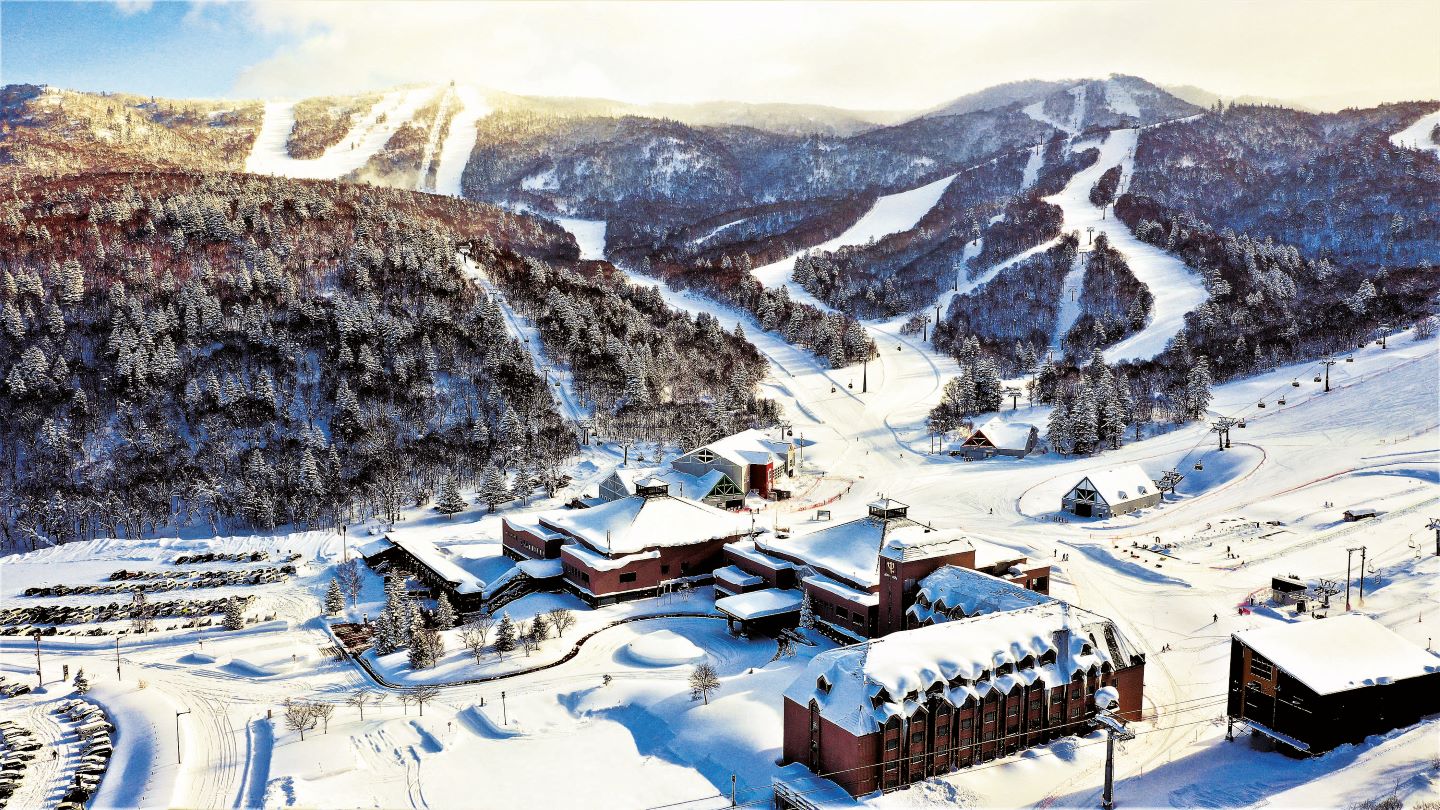
Kiroro Peak in Yoichi district is the newest addition to Club Med’s clutch of snow resorts in Asia (All photos: Club Med)
Charlie was contorting our limbs into a precarious position, as if we were squatting over an imaginary bonfire. “Lift your back and don’t get burnt,” warned our zealous snowboard instructor at Club Med Kiroro Peak in Hokkaido, Japan.
Knees bent, muscles clenched and hips pushed forward, we bolted over the edge and watched the nose of our board point resolutely downhill before it left earth in a blink. Except, it should not. Our view a minute ago from the hilltop — where a golden sun spilled a molten glow on a robin-blue sky — was immediately replaced by a blanket of white as the ground roared up to greet us with violent intent. After schussing past our classmates and warning them with a few choice expletives, tumbling over and landing face-first in the snow for the 36th time became easier. Because falling gracefully was no longer the point; it was the patience and perseverance to strap on our boots and go again.
Every maiden outing on the slope is a long and hard lesson in which humility and humiliation are part of the syllabus. In a surfer-like stance, we feigned calmness and chanted to ourselves the fundamental movements demanded by a five-foot-long fibreglass strapped to our beginner’s feet.
Two-time Olympic gold medallist Chloe Kim waxes lyrical about the thrill of the extreme sport on TV, but what the American prodigy fails to inform us is that a snowboard is a wicked thing with a mind of its own. One minute, we were carving sinuous lines like a natural; the next, we were dragged by gravity into a crash that would wreck our back and mental strength. Even so, bewitched by the adrenaline of uncertainty, we found ourselves hankering to ride day after day despite barrelling down on our rear end among a group of chirpy eight-year-olds, shiny in their youth, stamina and ease. The freedom to fail without caring was revelatory.
kiroro_snowboard.jpg
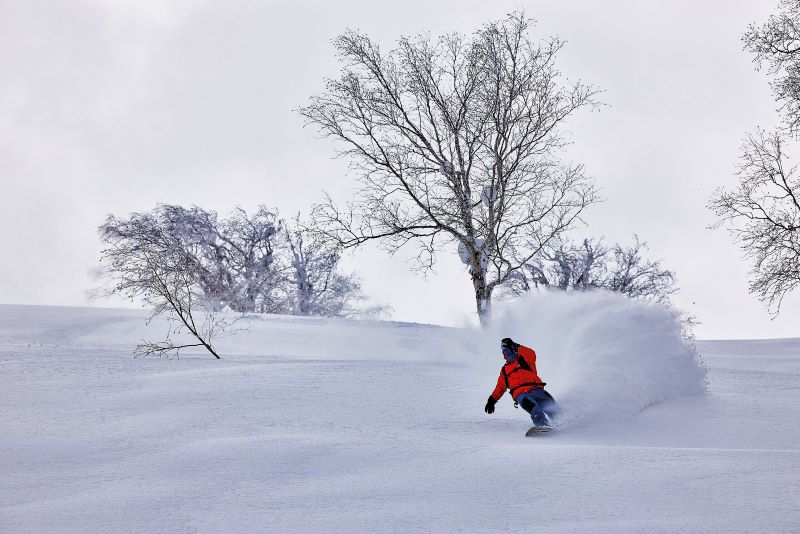
For decades, the Japanese have taken up snow sports with the kind of fervour reserved for animes. It also helps that the country is swept by an “ocean effect”, which bestows its second-largest island, Hokkaido, with the finest and softest powder snow in the world. Steam that rises from the warm current heating the island’s coasts collides with the frigid Siberian wind before forming clouds that roll in feather-light snow around mountain ranges in Sapporo and Niseko. Chasing cherry blossoms may be a pilgrimage for some, but ski snobs are bound to tell you that the other prime time in the
Land of the Rising Sun is the dead of winter.
The wow factor is in the “Japow” (abbreviated from “Japan Powder”) as devotees chase beauty and ecstasy amid the depths of gossamer-like snow with the texture of a fluffy down-covered bed. Unlike groomed runs, a powdered trail is easier to manoeuvre, turning every glide into a floating sensation on snowy wilderness. Hokkaido benefits from a geological quirk where deciduous hardwoods such as beeches and gold birches flourish; where old trunks — thick and gnarly — engender a mythical landscape and playground for tree skiing. Some question the sanity of speeding down forested pitches; Club Med said, “Why not?” This destination for some of the world’s highest-calibre skiing and snowboarding talent is precisely the reason four major properties — Tomamu, Sahoro, Kiroro Peak and Kiroro Grand (set to open at the end of the year) — have been set up in Japan’s northern outpost.
For the uninitiated, the roots of French travel operator Club Med or Club Méditerranée were modest. Ushering a new era of fuss-free vacation in the 1950s, Belgian water polo champion Gérard Blitz pitched 200 tents on a Mallorcan beach in the hope of offering bronzed Europeans the chance to frolic, and wine and dine all under one roof. Business boomed, structures expanded, and the brand continued to add exotic locations such as Cancún and the Bahamas to its portfolio — all before a consortium led by Shanghai-based Fosun Group bought the Paris-based firm in a 2015 deal valued at about US$968 million. Although there is a growing preference for curated experiences among discerning tourists, in recent years cost-conscious holidaymakers have re-embraced the simplicity and convenience of an all-inclusive destination.
club_med_kiroro_peak_tatami_room.jpg
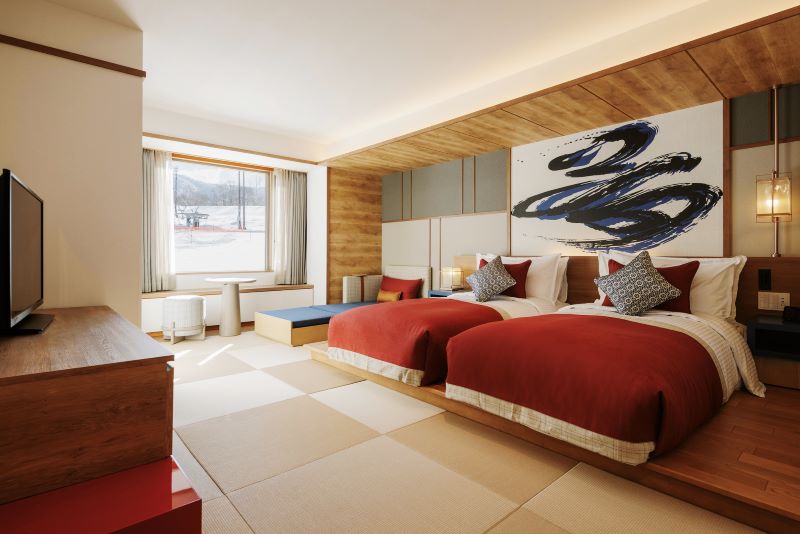
Hokkaido, a 90-minute plane ride from clamorous Tokyo, is inhabited by only 5% of the total population, including the country’s remaining indigenous tribe, the Ainu. Yet, the 2.1ha Kiroro Peak in Yoichi district, the newest addition to Club Med’s clutch of snow resorts in Asia, saw a swell of tourists descending upon the mountain after it opened last December. Blessed with an average snowfall of 21m and a protracted ski season that lasts until May, the spiffily rejuvenated resort that took over two existing properties (Kiroro Grand makes up the other half) is home to 23 winding courses and pristine off-piste slopes.
Japan is no stranger to borrowing elements of the past to design for the future. Ikebana, shoji screens, tatami mats and low-slung furniture that graciously imitate the trappings of a ryokan are juxtaposed against cosmopolitan features such as a sprawling bar, fireplace and dangling light installations with casual élan. Interior specialist Studio HBA, a division of American design stalwart Hirsch Bedner Associates of Marina Bay Sands and Four Seasons Kyoto fame, was enlisted to envision a hospitality spectacle that pays ode to international and local artists.
Sure enough, guests can be acquainted with the homegrown scene when they saunter into the lobby or check into any of its 126 rooms, furnished with an inviting palette of alpine timbre and a large calligraphy painting hanging above every bed headboard. An arched window in one of the large suites, which faces Kiroro’s ski lift that stretches as far as the eye can see, provides an unfamiliar framing for ordinary sights. On sunny days, shadows elevate deprivations of the season — a half-buried thick needled pine, a branch or a wooden log — and present them as if on display. When the temperature plummets, suspended snow crystals in the air blur the horizon, melding sky and glacial summits into a swath of white infinity.
There is no better way to take in this vista than a gander from the outdoor rotenburo, where a hot bath edged between mountains assuages aches and pains after a day on the slopes. A stripped-down communal bathing is as much intimidating as it is transformative, but a restorative soak in sub-zero temperatures is markedly unusual: Pale arms, legs and torsos turn bright pink as they are lowered, sometimes to much grimacing, into 40°C waters that release enough steam to hide one from prying eyes. However, partaking of the ritual at night, illuminated by the moon and its bright attendants, brings a dramatic change in scenery. Buffeted by wind and time, twinkling snowflakes create a never-waning excitement as they land on your palm before disappearing forever into the heat.
rotenburo_onsen.jpg
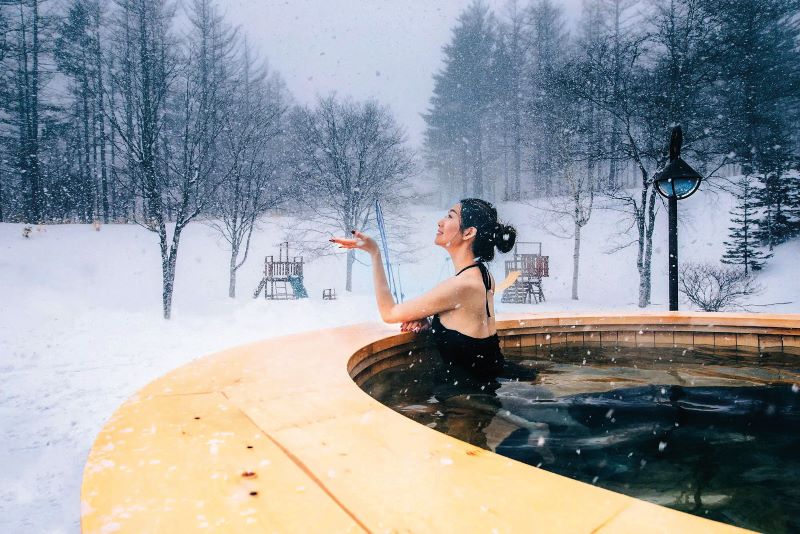
If the body has been soothed, it is time to be nourished. Booking into a Club Med in Japan is a fortuitous decision as meals often promise a triumvirate of local specialities: sashimi, saké and the ultimate showstopper, snow king crab. Prized for its meaty texture and locked-in freshness, the plump orange crustacean hauled directly from the sea can be enjoyed yakiniku-style on the grill or — the way we prefer it — in a nabe (hot pot). A ceramic pot with bubbling dashi, fortified by kombu (kelp), napa cabbage, mushrooms, green onions and chewy udon, creates the best vessel for the crab to be gently swished in before it is dipped in ponzu, the rough equivalent of a citrusy vinaigrette. To finish, abscond to the dessert line for one last round of yuzu ice cream.
Dining aside, activities such as snow trekking, yoga, cardio training, indoor swimming and nightly performances can be freely accessed by flashing the bracelet with a white disc bearing the company’s trident trademark. All Club Med “villages”, as the service team or GOs (Gentle Organisers) call it, have been designed in an organised and circuitous system, where you get around the integrated resort with minimal traversing and schlepping of your gear. Kiroro Peak comes with an added boon of accepting travellers and teenagers above 12, so those looking for a slice of privacy can seek quiet in the corridors or a haven for romance without reminders of potential consequences.
Club Med operates on an ethos of buffering guests from the outside world, but with a slew of properties ripe for exploration on this archipelago, at which ski resort should powderhounds set up base? CEO of East, South Asia and Pacific (ESAP) Rachael Harding solves the conundrum during an interview.
crab_in_nabe.jpg
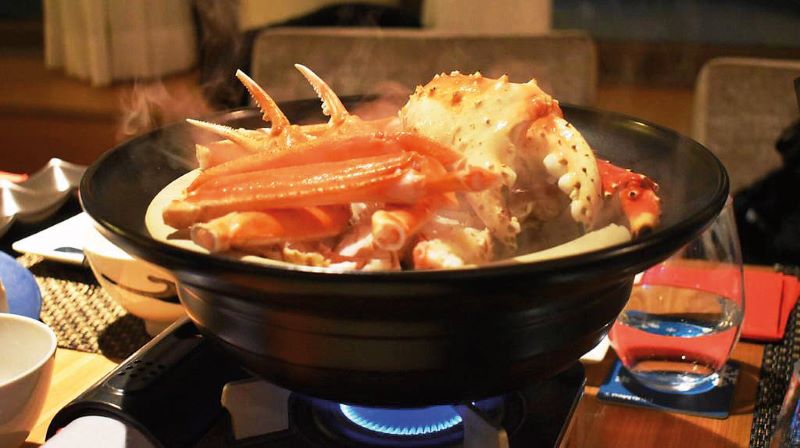
“The family-centric Tomamu, designed by world-renowned architect Jean-Philippe Nuel, is the ideal place to explore your ski skills on all levels while the more intimate and debonair Sahoro with just 177 keys, a mere 40 minutes away, leans towards a traditional format that still honours a revered part of ancient Japan. All-rounder Kiroro Grand, together with Peak, can accommodate up to 400 guests at the height of winter season.”
The genius in an all-encompassing getaway is that every decision would be taken out of our hands for a flat fee. But even a company with a foolproof formula needs the occasional jolt to raise its profile targeted at leisure classes with bulletproof bank accounts. Carve out a rarefied escapade at any of Club Med’s Exclusive Collection Resorts in Mauritius, the Seychelles, Italy or the Dominican Republic that boasts fewer guests but more bespoke service such as personal butlers and private pools. Or embark on a voyage in one of its legendary French sailing yachts.
Beyond trails and travails
A furious vortex of snow found its way into every crack of our insulated armour, chilling us to the bone as we persistently freed our eyelashes from building frost. Taking a break from the slopes, we ventured on a brutally gelid, one-kilometre path towards Lake Kanayama in -30°C weather, hoping to drop a line through a hole and wait until an unsuspecting fish happened by. If there is a winter pastime that can be compared to Japan’s bottomless love of onsen, it is undoubtedly ice fishing.
beyond_ice_fishing.jpg
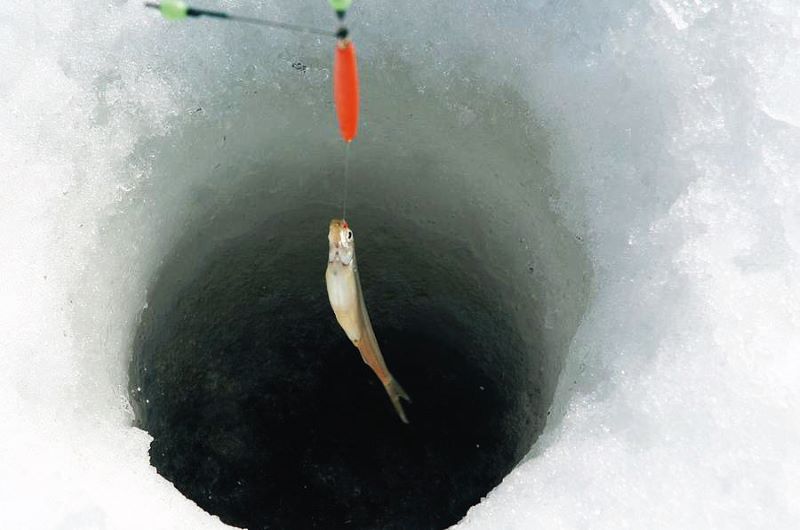
A guided excursion, which can be arranged via Club Med, does away with the guesswork and hassle of gear and bait. What seemed like ineffectual waiting in a remote frozen lake was quickly rewarded with camaraderie as fellow anglers huddled up in a heated tent, exchanging drinks and chatter in equal measure. Every catch — mostly wakasagi (smelt) — that came through the mile-deep orifice yielded cheers that reverberated throughout the tiny hut. Some tempura-fry their hard-earned bounty, but we decided to release them back into the wild. Pulling up each fruitful line and yelling out triumphs or failures were akin to striking a scratch ticket — that tingly, emotional afterglow was more gratifying than satisfying hunger pangs.
For a milder but no less gripping attraction, an evening jaunt to the Ice Village in Tomamu is not to be missed. Glowing ornaments strung together on trees like Christmas baubles led us to a slide and a 60m zip line, either of which can be used to slip down from the observatory to reach a skating rink and a small town scattered with eight igloos made of glittering ice. Inside, a dizzying array of sweets on skewers, snacks, hot chocolate and an ice bar stocked with 50 kinds of alcoholic beverages keep visitors filled and toasty.
beyond_ice_village.jpg
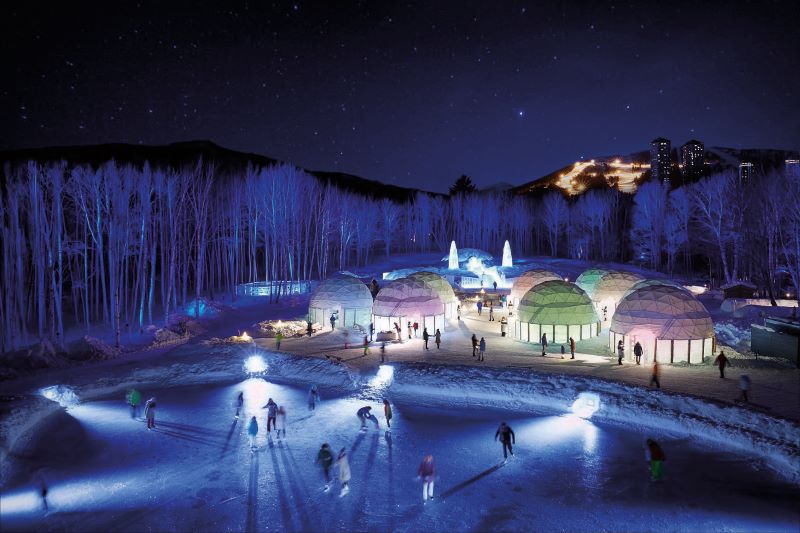
Down west, a quest for the freshest sea urchin, or uni, will take you to Tatsumi Sushi in Otaru, a midsize port in Sapporo famed for its retro bars and scads of century-old stone warehouses and glass shops. Only a quick 35-minute detour from Kiroro Peak, the harbour town and financial centre of Hokkaido is teeming with weekenders who make a day trip out of visiting the Ungakan, a museum housed in a restored warehouse dating back to 1893; Nishin Goten, a former fisherman’s residence that documents the craft of herring fishing; and the Music Box Museum, which has amassed 80,000 music boxes of 5,000 different kinds in one place.
For a final glimpse of an enduring Japan that is at once ancient and modern, amble along the Otaru Canal, a romantic landmark spot lined with gleaming lanterns as part of the town’s Snow Light Path Festival every February.
This article first appeared on Mar 13, 2023 in The Edge Malaysia.


